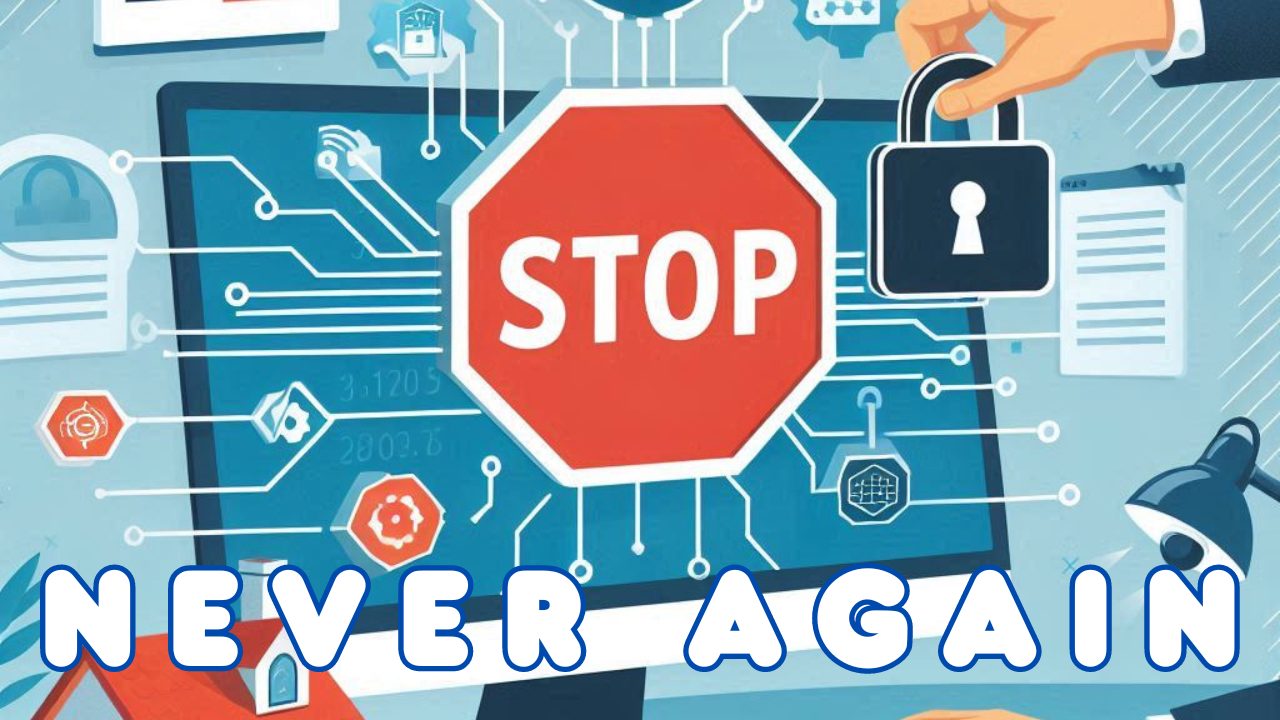Five Ways Small Businesses Can Stop A Cyber Breach From Ever Happening: Essential Preventive Measures
Cyber attacks significantly threaten small businesses, often leading to financial losses and damaged reputations. Many small business owners underestimate their vulnerability, believing hackers only target large corporations. However, cybercriminals frequently view smaller companies as easy targets due to their limited resources and potentially weaker security measures.
You can take proactive steps to protect your business from cyber breaches before they occur. By implementing robust security practices and staying informed about the latest threats, you’ll significantly reduce your risk of falling victim to an attack. This article explores five effective strategies small businesses can employ to prevent cyber breaches and safeguard their valuable digital assets.
Install Antivirus Software
Installing robust antivirus software is crucial in protecting your small business from cyber threats. You should choose a reputable antivirus program that offers comprehensive protection against various types of malware, including viruses, trojans, and ransomware.
When selecting antivirus software, look for features like real-time scanning, automatic updates, and email protection. These capabilities help ensure your systems are continuously monitored and defended against the latest threats.
After installation, make sure to keep your antivirus software updated. Regular updates allow the software to recognize and combat emerging cyber threats effectively.
Configure your antivirus software to perform regular scans of your entire system. This practice helps detect potential threats that may have slipped through initial defenses.
Consider implementing antivirus solutions that offer centralized management for multiple devices. This approach allows you to monitor and protect all company devices from a single dashboard, making maintaining consistent security across your business easier.
Remember that antivirus software is just one part of a comprehensive cybersecurity strategy. You should combine it with security measures such as firewalls, regular software updates, and employee training to create a robust defense against cyber breaches.
Conduct Regular Security Audits
Regular security audits are crucial for small businesses to identify vulnerabilities and strengthen their cybersecurity defenses. By conducting these audits, you can uncover hidden security risks before cybercriminals exploit them.
Start by establishing a consistent audit schedule. Aim to perform comprehensive security checks at least once a year, with more frequent assessments of critical systems.
Examine your network infrastructure, software applications, and data storage practices during the audit. Look for outdated systems, weak passwords, and potential entry points for hackers.
Don’t forget to review your employee access levels and permissions. Ensure staff members can only access the data and systems necessary for their roles.
Consider enlisting the help of external cybersecurity experts. They can provide an unbiased evaluation of your security posture and offer fresh insights into potential vulnerabilities.
After completing the audit, prioritize addressing any identified issues. Implement recommended security measures promptly to improve your resilience against cyber threats.
Remember that cybersecurity is an ongoing process. Stay informed about emerging threats and adjust your security practices accordingly. Regular audits will help you maintain a strong defense against evolving cyber risks.
Implement Multi-Factor Authentication
Multi-factor authentication (MFA) is a crucial security measure for small businesses. By requiring users to provide multiple forms of identification, you significantly reduce the risk of unauthorized access to your systems.
MFA adds extra layers of security to the login process. It goes beyond traditional username and password combinations, making it 99% less likely for your accounts to be hacked.
You can choose from various MFA methods. These include something you know (like a password), something you have (such as a smartphone), and something you are (biometric data like fingerprints).
Implementing MFA across your business systems protects sensitive data and applications. It’s an effective defense against cyber breaches, even if passwords are compromised.
MFA is particularly valuable for small businesses. It provides enterprise-level security without requiring extensive resources or technical expertise.
Remember, the cost of implementing MFA is far less than the potential financial impact of a cyber breach. In 2020, the average cost of a breach was nearly $4 million.
By adopting MFA, you create a robust barrier against unauthorized access. This simple yet powerful tool can dramatically enhance your cybersecurity posture and protect your business from costly breaches.
Train Employees About Phishing
Educating your staff about phishing is crucial for protecting your small business from cyber breaches. Implement security protocols and train employees to recognize and respond to phishing attacks.
Start by identifying available training resources. Many online courses and materials are specifically designed for small businesses. Choose resources that are clear, concise, and regularly updated.
Teach your employees how to spot common phishing tactics. This includes recognizing suspicious email addresses, spotting unusual requests, and identifying fake websites. Encourage them to be cautious of unsolicited messages asking for sensitive information.
Conduct regular phishing simulations to test your employees’ awareness. These exercises help reinforce learning and identify areas that need improvement. Provide constructive feedback to those who fall for the simulated attacks.
Establish clear procedures for reporting suspected phishing attempts. Ensure your staff knows who to contact if they encounter a suspicious message. This will allow for a quick response and can prevent potential breaches.
Consider implementing technical solutions to support your training efforts. Email filtering tools can help block many phishing attempts before they reach your employees’ inboxes.
Remember to keep your training program ongoing. Cyber threats evolve rapidly, so it’s important to update your employees’ knowledge regularly. Schedule refresher courses and share updates on new phishing tactics as they emerge.
Secure WiFi Networks
Securing your business WiFi network is crucial to prevent unauthorized access and data breaches. Start by changing your default router password to a strong, unique combination of letters, numbers, and symbols.
Enable WPA3 encryption on your network to protect data transmitted between devices and your router. If WPA3 isn’t available, use WPA2 as a minimum standard.
Create a separate guest network for visitors and non-essential devices. This isolates them from your main network, reducing potential security risks.
Regularly update your router’s firmware to patch security vulnerabilities and improve performance. Many routers offer automatic updates, so enable this feature if available.
Use a virtual private network (VPN) for remote access to your business network. This encrypts data transmitted over public WiFi, protecting sensitive information from interception.
Implement multi-factor authentication for network access. This adds an extra layer of security beyond just a password.
Disable WPS (WiFi Protected Setup) on your router, as hackers can exploit it to gain unauthorized access.
Regularly monitor your network for unusual activity or unknown devices. Promptly investigate and remove any suspicious connections.
Consider using a network security monitoring tool to automate threat detection and response on your WiFi network.
Importance of Cybersecurity Infrastructure
A robust cybersecurity infrastructure protects your small business from digital threats. It forms the foundation of your defense against cyber attacks and data breaches.
Assessing Current Security Measures
Start by evaluating your existing security measures. Conduct a thorough audit of your digital assets, including hardware, software, and network configurations.
Identify potential vulnerabilities in your systems. Look for outdated software, weak passwords, and unsecured network access points.
Create an inventory of all devices connected to your network. This includes computers, smartphones, and IoT devices.
Assess your data storage and backup procedures. Ensure sensitive information is encrypted and properly protected.
Review your employee access controls. Implement the principle of least privilege, granting users only the permissions necessary for their roles.
Consider engaging a cybersecurity professional to perform a comprehensive security assessment. They can provide expert insights into your current security posture.
Implementing Robust Firewalls
Install and configure a strong firewall as your first line of defense. Choose a Next-Generation Firewall (NGFW) that offers advanced threat protection features.
Set up your firewall to monitor and control incoming and outgoing network traffic. Establish rules to block suspicious activities and unauthorized access attempts.
Enable intrusion detection and prevention systems (IDS/IPS) within your firewall. These help identify and stop potential attacks in real-time.
Regularly update your firewall’s firmware and threat databases to ensure protection against the latest known vulnerabilities and attack vectors.
Consider implementing a DNS-layer security solution. It can block malicious domains before connections are established, preventing attacks.
Don’t forget to secure your Wi-Fi networks. Use WPA3 encryption and strong, unique passwords for all wireless access points.

Employee Training and Awareness
Employee training and awareness are crucial for preventing cyber breaches in small businesses. Educating your staff and conducting practical exercises can significantly reduce the risk of successful cyberattacks.
Developing Comprehensive Training Programs
Cybersecurity training programs should cover various topics to ensure your employees are well-prepared. Include modules on password security, data protection, and safe internet browsing habits.
Tailor the content to different job roles and experience levels. For example, IT staff may need more in-depth technical training, while customer service representatives might focus on handling sensitive customer data.
Make training sessions interactive and engaging. Use real-world examples and case studies to illustrate the importance of cybersecurity. Regularly update your training materials to address new threats and technologies.
Consider implementing a rewards system for employees who consistently demonstrate good cybersecurity practices. This can help reinforce positive behaviors and create a culture of security awareness in your organization.
Phishing Simulation Exercises
Conduct regular phishing simulation exercises to test and improve your employees’ ability to identify and report suspicious emails. These exercises mimic real-world phishing attempts without putting your business at risk.
Start with simple exercises and gradually increase the complexity. This approach allows employees to build their skills over time. After each exercise, provide detailed feedback on what employees did right and where they can improve.
Track the results of these simulations to measure progress and identify areas that need more focus. Use this data to refine your training programs and target specific weaknesses in your team’s cybersecurity awareness.
Encourage open communication about phishing attempts. Create a system for employees to report suspicious emails quickly and easily. This proactive approach can help catch real threats before they cause damage to your business.
Contents
- 1 Five Ways Small Businesses Can Stop A Cyber Breach From Ever Happening: Essential Preventive Measures
- 2 Install Antivirus Software
- 3 Conduct Regular Security Audits
- 4 Implement Multi-Factor Authentication
- 5 Train Employees About Phishing
- 6 Secure WiFi Networks
- 7 Importance of Cybersecurity Infrastructure
- 8 Employee Training and Awareness

 55 Park Road,
55 Park Road, 




